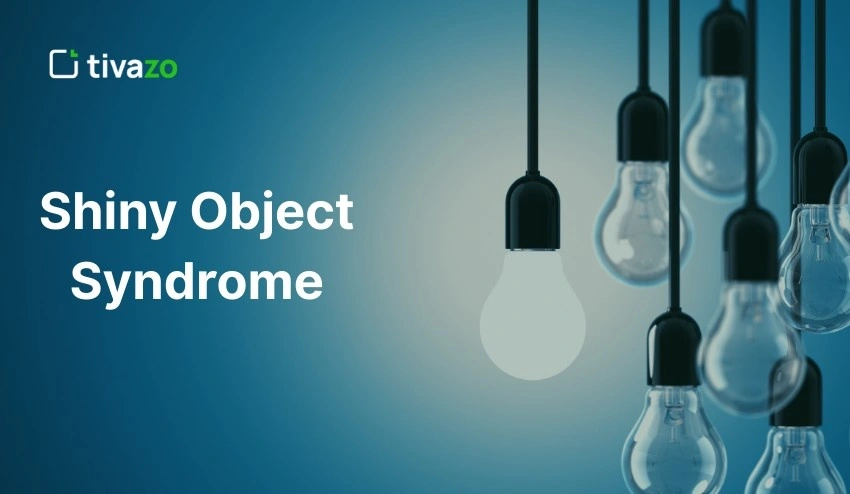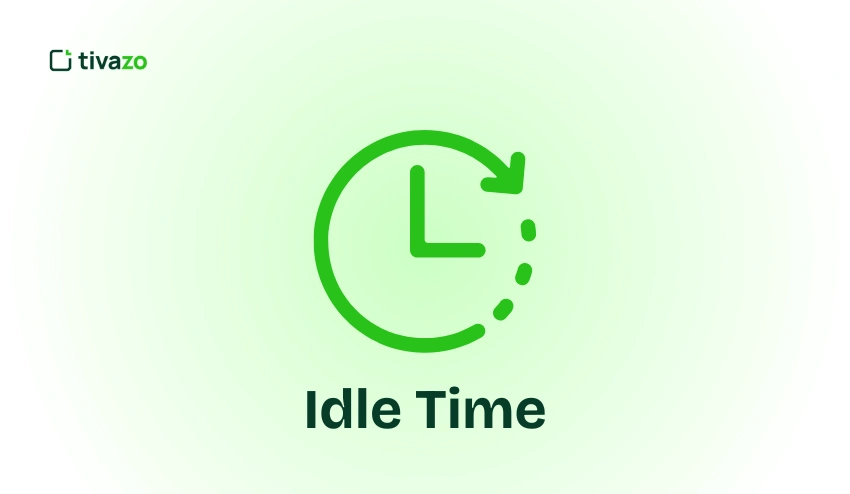Does it feel like your business is continuously chasing trends and the next big thing? Do you feel you need to adopt new plans, tools, strategies, and tactics that guarantee to rewrite your results, and you find yourself overstimulated and off course? If you answered yes, then it is very likely that you are suffering from Shiny Object Syndrome (SOS). SOS does not have to be debilitating, though!
Whether you are an entrepreneur, business leader, or manager of a team, SOS is real for many of us. The allure of chasing the next shiny opportunity, losing focus on your planned tasks, and not completing plans you have already committed to can be unproductive and chaotic.
This blog will explore 7 tested strategies to help you move past the shiny objects in life, regain your focus, and stay productive without being so easily distracted by every new trend out there.
Key Highlights:
- Understanding Shiny Object Syndrome
- Psychological Effect of Shiny Object Syndrome
- Strategies to Overcome Shiny Object Syndrome
- Build a Long-Term, Sustainable Workflow
- Build a Resilient Mindset to Overcome Shiny Object Syndrome
- Role of Time Management in Combating Shiny Object Syndrome
Understanding Shiny Object Syndrome (SOS) and Its Impact on Your Business
What is Shiny Object Syndrome?
Shiny Object Syndrome is the proclivity to get easily distracted by the latest business opportunities, tools, and trends without giving full attention to the goals and strategies that we have already committed to. Given the allure of the shiny new toy, we can easily lose track of important, longer-term tasks, which can create a domino effect of inefficiency.
It is perfectly rational and normal to want to try out new tools or strategies, but if we fall into the rut of SOS, it can have a significant and damaging effect on our productivity and ultimately success.
How Shiny Object Syndrome Affects Your Business
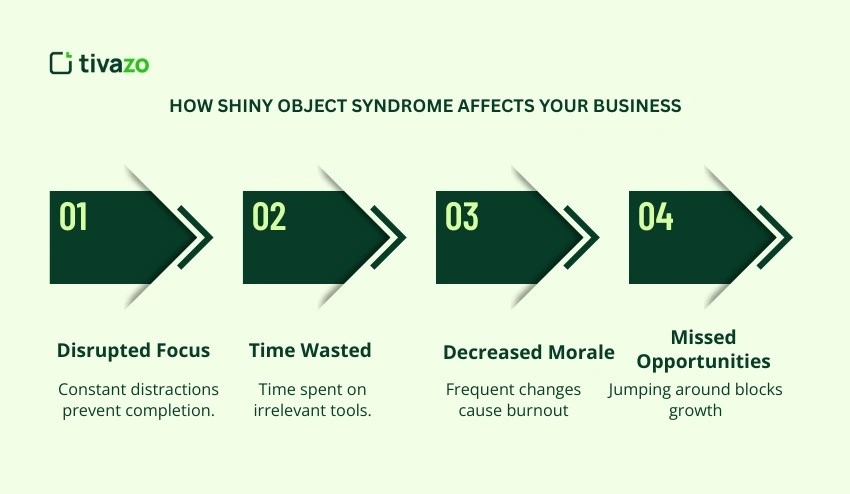
- Disrupted Focus: Constantly flitting from one shiny new idea to the next new trend means that you never actually finish anything, which ultimately produces no results.
- Time Wasted: You are spending time on understanding new tools or systems that are likely not even relevant to your current challenges, which leads to a waste of time.
- Decreased Team Morale: Endless requests for your team to learn new tools or shift to a new focus can lead to feelings of burnout, disengagement, and inertia.
- Missed Opportunities: Without a consistent focus, you may miss long-term growth opportunities because you are constantly jumping from one short-term distraction to the next.
The Psychological Effect of Shiny Object Syndrome on Entrepreneurs and Teams
Shiny Object Syndrome is not just a productivity issue; it is a psychological pitfall. Most, if not all, entrepreneurs experience Shiny Object Syndrome more than others because of decision fatigue, always being required to be one step ahead of everything, or a fear of missing out (FOMO).
For teams, shifting focus from one shiny object to another can create confusion, an incongruency in direction, and downright frustration for those involved. When employees or business partners are asked to switch focus on project after project, there will be interruptions to their workflow that cause inefficiency and a dip in morale.
7 Proven Strategies to Overcome Shiny Object Syndrome
Next, we’ll take a look at the 7 most important strategies to escape Shiny Object Syndrome and failure.
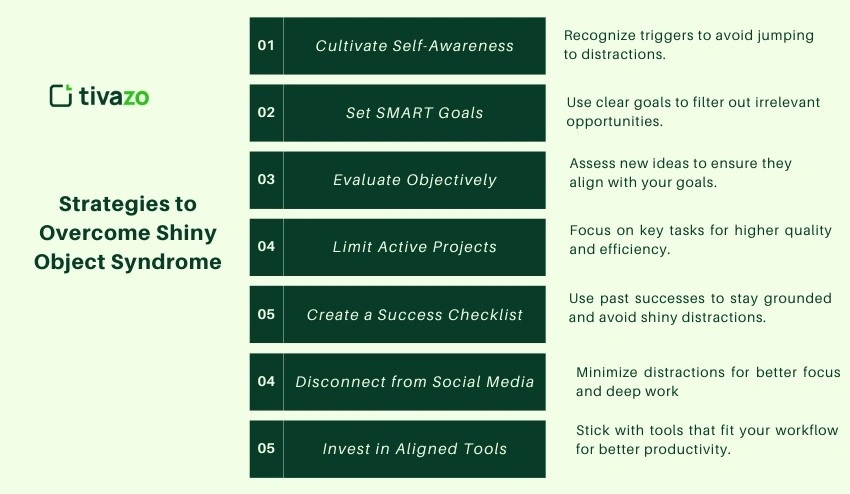
1. Cultivate Self-Awareness to Recognize the Triggers
Explanation:
The first step to overcoming Shiny Object Syndrome (SOS) is to identify what triggers it. In many cases, SOS is driven by an underlying fear of missing out (FOMO) or the thrill of discovering a new opportunity. Recognizing these triggers will promote self-awareness of when you are about to chase something that takes you
Why This Matters:
- Self-awareness that allows you to break the cycle of hopping from one task or tool to the next.
- It allows you to assess if the temptation comes from true FOMO or the desire for improvement out of genuine interest.
2. Set Clear, Aligned Goals Using the SMART Framework
Explanation:
When you do not have a defined set of goals, it is easy to get distracted by the many shiny things in front of you. The SMART (Specific, Measurable, Achievable, Relevant, Time-Bound) framework takes a structured approach to goal setting, allowing you to still be present to the new prospective shiny things that align with your broader business goals and objectives.
Why This Matters:
- Clarity of goals allows you to see a new idea through a more focused lens, and allows you to say “no” when that idea does not fit.
- SMART goals provide you with a mechanism to avoid being distracted by what doesn’t fit with your long-term vision.
3. Evaluate Every New Opportunity Objectively
Explanation:
Instead of jumping onto the current “it” thing, a new tool or way of working, take the time to assess it objectively. You will not be able to step out of the excitement of a shiny new tool or idea and drive your meaningful assessment by considering whether or not it’s aligned to your existing goals, simply because it sidetracks you, or if it will continue to provide value in long-term goals.
Why This Matters:
- Objective evaluation protects you from jumping into new tools or strategies without them having a considerably valuable impact.
- It allows you to allocate your resources against projects that have great upside potential and long-term growth.
4. Limit the Number of Active Projects and Tasks
Explanation:
You hamper productivity by taking too many projects on at once. By reducing your attention to just the most important activities, you will be sure that you are getting work done.
Why This Matters:
- Prioritization results in higher quality work, faster movement, and a more enjoyable work experience.
- Less distraction multiplies the available attention on important projects = higher quality and greater efficiency.
5. Create a Success Checklist & Stick to It
Explanation:
To combat the pull of shiny objects, spend some time looking back on past successes, working strategies, and develop a success checklist. This success checklist will provide real context for how far you have come, and remind you when you are faced with shiny objects that you have proven successful working the proven way.
Why This Matters:
- Reviewing past successes will ensure you are in a more positive state of mind and will keep you from getting distracted by some new glimmer
- It will remind you to stick with what works, and not run off after every shiny new idea.
6. Disconnect from Social Media & Reduce Distractions
Some may not be aware of this, but social media often exacerbates the desire to see and learn about new trends and tools. With ads, newsletters, updates, and more, social media can completely throw your attention off in a variety of ways. Minimizing a social media presence helps to self-ground yourself and focus on what truly matters at that time.
Why This Matters:
- Taking a social media break improves focus and the ability to do deep work without interruption.
- This helps you to resist the pull of new trends, tools, and ideas that show up on your feed.
7. Invest in Tools That Align With Your Business Model (And Stick With Them)
Explanation:
Investing in a tool is not the issue. The issue is jumping to every new shiny tool that comes your way as soon as you can because it is new. The best approach is to add a tool that matches your business model and workflow. Adding a tool that works for you will save you time and avoid tool overload.
Why This Matters:
- Then you can be consistent with your tools, and your team can become skilled at your tools, giving you back time and increasing productivity.
- Sticking with a tool that works for you will give you better long-term outcomes than changing from one tool to another.
How to Build a Long-Term, Sustainable Workflow to Avoid Shiny Object Syndrome
To effectively overcome Shiny Object Syndrome (SOS), it is critical to create a long-term, sustainable workflow. Short-term solutions, such as minimizing distractions or blocking off time, are helpful, but you want to help you and your team build a comprehensive system that helps to keep you focused on the long haul. Having a sustainable workflow is helpful because it allows you to keep from diverging to the next shiny object while also keeping you committed to what you want to achieve in the bigger picture.
Key Elements of a Sustainable Workflow:
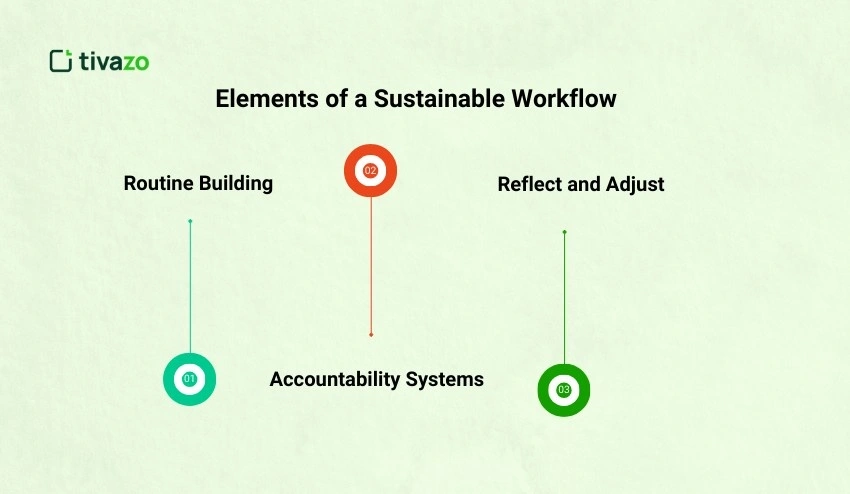
- Routine Building: Develop and consistently practice routines that focus on your highest value activities.
- Accountability Systems: Have an accountability partner/system, or note the value of having your teams in accountability systems to keep you aligned with the long-term vision.
- Reflect and Adjust: Continually assess your workflow for its alignment with your intended goals.
The Role of Digital Wellness in Beating Shiny Object Syndrome
Among the list of important components to address leading factors of SOS, digital distractions are a big part of it. The never-ending assault of digital distractions, ranging from social media to the constant influx of emails could be overwhelming. Digital wellness can support you in this challenge and help provide a healthier and more concentrated work experience.
Digital Wellness Tips to Improve Focus:
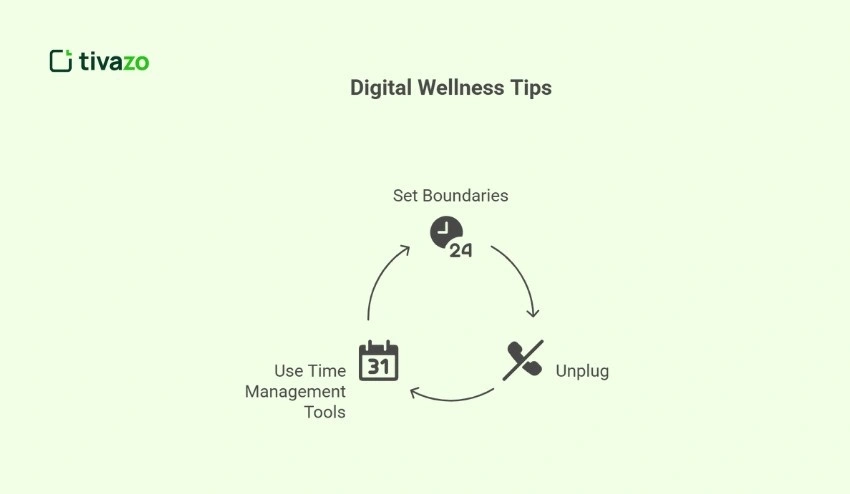
- Mindful Technology Use: Set boundaries on when and how you are checking email, social media, and other apps.
- Unplug: Set aside time to disconnect from all digital devices to refresh your mental energy.
- Use Time Management Tools: Use time management tools to help manage your time, place limits on your digital activities, and enhance your overall digital wellness.
How to Build a Resilient Mindset to Overcome Shiny Object Syndrome
Having a mentally tough mindset is essential for resisting distractions and keeping your focus on your longer-term goals. Mental toughness allows you to fixate your energy on either a single decision or on the projects you’ve made progress on, instead of always searching for new opportunities.
Mental Resilience Tips:
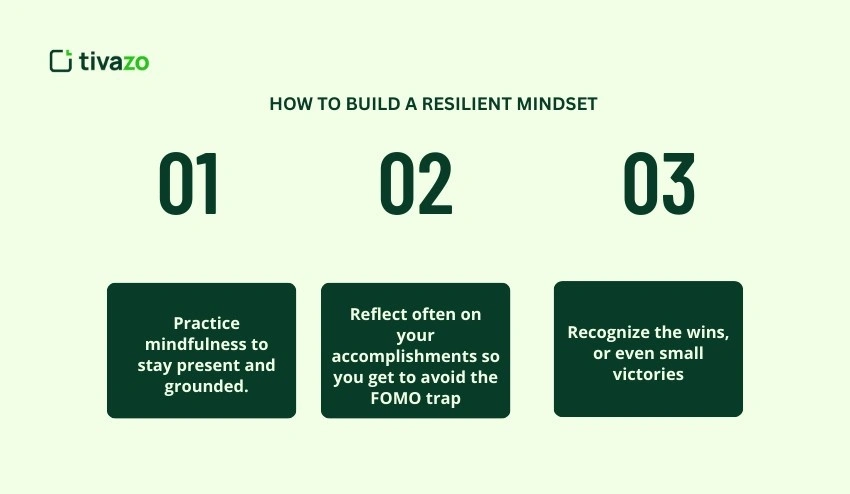
- Practice mindfulness to stay present and grounded.
- Reflect often on your accomplishments so you get to avoid the FOMO trap.
- Recognize the wins, or even small victories, to keep both your motivation and focus off the wasteland of distractions.
The process of developing a stronger mindset will tremendously benefit your ability to ignore ever-increasing shiny object distractions and commitments to keep you aligned with your core business objectives.
The Role of Time Management in Combating Shiny Object Syndrome
Time management is among the most valuable assets for reducing your shiny object syndrome. Mastering time management will allow you to allocate time (and resources) to the goal that matters and help you avoid time sucking shiny objects.
Key Time Management Strategies:
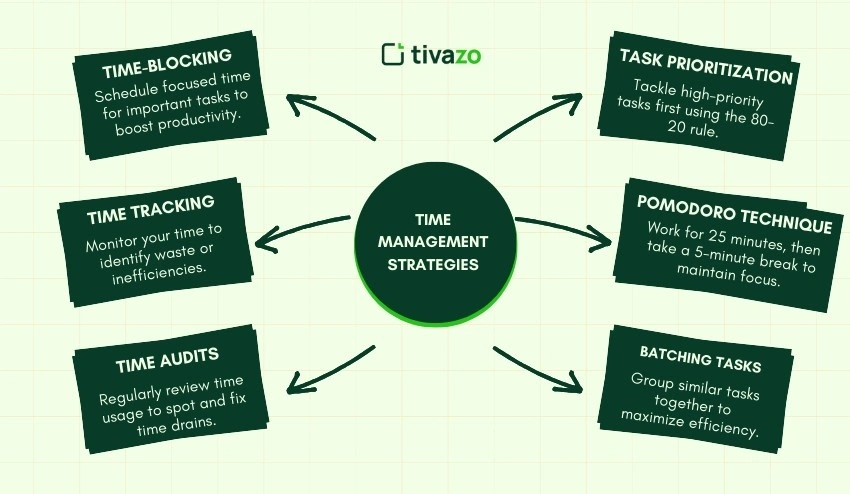
- Time-blocking:
- By scheduling blocks of time to do the most important work, you may double your time achievement and minimize distractions.
- Task Prioritization:
- You want to tackle the most important tasks/items first.
- Best fit activity that changes the most variables affects the 80-20 rule.
- Time Tracking:
- Track when & where your time is spent to review the waste or inconsistencies.
- The Pomodoro Technique:
- Work for 25 minutes, followed by a 5-minute break. This is the Pomodoro Technique.
- This helps you stay focused and allows your energy to be maintained over the course of the day.
- Time Audits:
- Schedule time to look back over your time usage to uncover time drains.
- Tweak tasks to find a better rhythm based on insight from your audit, if needed.
- Batching Similar Tasks:
- To be more efficient, batch/ group similar tasks to get more done.
- You can chunk out time, for example, emails, in a specific block, or take time for meetings only on certain days, etc.
Time management will not only help reduce distractions, but as a result, will also give you a chance to step back and review what is important and what will really help you get your goals accomplished at your own pace.
Conclusion: Stay Focused, Stay Productive, and Achieve Your Goals
You may be dealing with a productivity killer, Shiny Object Syndrome, but you can get past that with the right mindset, tools, and strategies. The 7 ideas shared in this blog are helpful ways for you to reclaim your business and advance towards your goals with clear intention.
